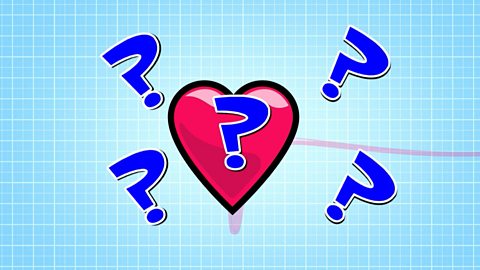Video summary
These notes outline the contents of the full Operation Ouch programme, ‘How are babies made?’. Please note that this film contains sexual references and you should watch it to gauge its suitability before showing either the full film or the shorter clips to your pupils.
Note also that the full programme includes content not covered by the primary curriculum (such as family names for genitals). Please ensure you have referred to your school’s policy for RSHE (Relationships, Sex and Health Education) to ensure its suitability.
You can find shorter clips from the programme designed for use in class, with supporting teacher notes, by following the links below:
· Puberty
· Attraction
· In vitro fertilisation (IVF)
In this Operation Ouch programme, Dr Chris, Dr Xand and Dr Ronx explain how babies are made. Starting with relationships and families, they describe the combinations of humans that can make up a family: mothers and fathers, sisters, brothers, dogs, two fathers, two mothers, foster families.
The programme goes on to introduce the topic of reproduction, genitals and reproductive body parts. It explains that babies start from an egg and a sperm.
It then describes puberty and why this happens, defining it as changing from a child to a reproductive adult and explaining the changes that happen in female and male bodies: growth spurts, body hair, strength, sperm production, egg release and hormones.
This leads on to talking about the feelings of attraction that can begin to happen during puberty, and we hear how they can feel warm, exciting, and sometimes confusing. The programme explains that people can be attracted to someone of the opposite sex or the same sex, and that sometimes (if both people agree) these feelings can lead to a relationship. This may include physical acts kissing, holding hands and, for adults, may lead to sex.
The programme talks about genitals, arousal, sexual intercourse, and fertilisation, explaining that this is something that can happen when a man and woman decide to have sex to make a baby, and that this is the most common method of fertilisation. It refers to being grown up and the role of consent in choosing to start a physical relationship.
The last part of the programme describes the process of IVF (In Vitro Fertilisation), explaining that it is a procedure used to help people who cannot conceive via sexual intercourse. It describes how IVF is used to help eggs and sperm to meet, fertilise and hopefully make a baby.
The programme should be used as part of the school RSHE curriculum, which you and your school will have developed to reflect the needs of your pupils and in consultation with parents. You may choose to use these clips to support your KS2 science lessons as well. Some schools choose to draw cross-curricular links with these topics and other relevant subjects.
You should ensure you are up-to-date with best practice in RSHE teaching before delivering this content.
It is up to individual schools to define relationships education, sex education, health education and science. This may be stated in your school’s policy. These films must be watched carefully prior to using them in class, to ensure that the content reflects their school policy and definitions.
Relationships, health and science are statutory elements of the curriculum in England.
Sex education is not statutory at primary: parents have the right to withdraw their children from this element of the curriculum. See (paragraph 45-50).
Please refer to for more detailed guidance (PDF, 181KB)
Relationships and families. video
This short film is about combinations of humans that can make up a family: mothers and fathers, sisters, brothers, dogs, two fathers, two mothers, foster families. It introduces the concept of biological parents, adoptive parents, foster parents, and divorced parents.

Sperm, egg and reproductive organs. video
This short film introduces the topic of reproduction and that babies start from an egg and sperm. Correct terminology is given for genitals and reproductive body parts in male and female bodies.

Puberty. video
This short film looks at puberty and why it happens, defining it as changing from a child to a reproductive adult. There is a description of the changes that happen in most bodies, what that may mean for female bodies and male bodies, when it might happen and that it is normal.

What is attraction? video
This short film is about feelings of attraction that can begin to happen during puberty. They can feel warm, exciting, and sometimes confusing.

Sex and sexual intercourse. video
This short film talks about genitals, arousal, sexual intercourse, and fertilisation. It sets out that this is something that can happen when a man and woman decide to have sex to make a baby, and that this is the most common way of fertilisation.

In vitro fertilisation (IVF) video
This short film explains IVF - a procedure used to help people who cannot conceive via sexual intercourse. It is used to help people to get their eggs and sperm to meet, fertilise and hopefully make a baby.
